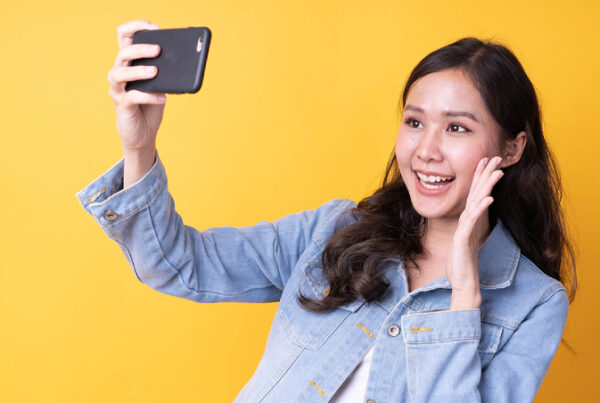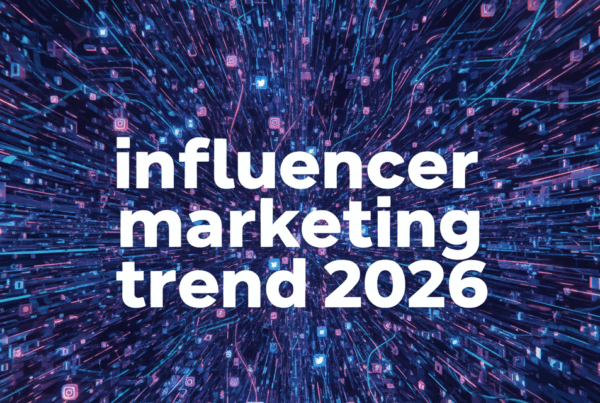According to a new survey from the ANA, 75% of marketers are using influencer marketing as a tool in their marketing strategies. The number of brands on social media has been increasing at an exponential rate. Therefore, what differentiates a successful influencer marketing campaign from a less successful one?
Well, you might be tempted to give reasons like budget and scale. However, one of the biggest reasons behind a successful influencer marketing campaign are the influencers. In other words, whether a brand works with the most relevant influencers can determine the outcome of a campaign.
Therefore, today’s article will focus on the importance of relevant influencers, this article will touch on why relevant influencers are important and how to find these influencers.
The importance of relevant influencers | Influencer marketing manual

The key to influencer marketing lies with the influencers. After all, they form the building blocks of any influencer marketing campaign.
Relevant influencers does not necessarily have to mean the latest, most popular people on social media. Instead, you should consider relevancy in relation to your brand. There are some guiding questions you can ask yourself in the search for relevant influencers:
Which influencer produces content that is in line with my brand’s message?
Which influencer has an audience that is similar to my campaign’s target audience?
Is the influencer credible and well trusted among his/her audience?
Is the influencer’s image the closest to the image my brand wishes to project?
You might be tempted to go for the influencers with the most number of followers, also known as macro-influencers. While influencers are great for expanding the reach of your campaign, macro-influencers are not always the answer to a successful campaign.
This is because social media is saturated with branded content. Therefore, for a campaign to be successful, a brand must ensure that the right message is conveyed to the right people. How this is done is through relevant influencers.
Having an influencer whose audience is similar to your target group would ensure that the impact of your message is much stronger. For instance, athleisure brands like Nike and Adidas would not want to only work with food bloggers and influencers as the audience of these food bloggers would likely not be interested in the content Nike has to offer.
Furthermore, a mismatch of brands and influencers can result in artificiality. Picture this, your favourite fashion blogger who has an Instagram feed filled with fashion related content starts posting about her latest tech gadget. Would it seem out of place? Well, such a mismatch would limit the impact of an influencer marketing campaign as a fashion blogger’s expertise is not in tech, rather it is in fashion. Of course, if a tech brand has a focus on fashionable tech items, getting influencers would not seem out of place since the product matches with the influencer chosen.
Additionally, there are many influencers that produce content in different categories. Therefore, you just need to ensure that your brand’s content does not directly conflict with the influencer’s postings.
Now that we have emphasized the importance of finding relevant influencers, we will move on to touch on the steps involved in finding these influencers.
How to find the most relevant influencers | Influencer marketing manual
1. Set goals

Firstly, you should plan out the goals you have for an influencer marketing campaign. Are your goals related to the promotion of a new product or a promotion of your brand’s name?
Here are some goals:
Sales maximisation of existing product
Raising awareness of a existing product
Sales maximisation of a new product
Raising awareness of a new product
Strengthening brand image
Increasing brand engagement and interaction on social media
Of course, you might have more than one objective for each marketing campaign. You can then choose to rank these objectives based on the order of importance. Knowing your goals will determine which influencers are the most relevant for the particular campaign.
For instance, if brand or product awareness is high on your list, you might choose to engage with influencers with a larger reach, also known as macro influencers. However, if your goal is to increase engagement and interaction, you might want to focus on micro influencers.
Micro influencers tend to have higher engagement rates (ratio of comments and likes), as they might know a larger proportion of their followers personally, and are able to engage with a larger proportion of followers on their social media accounts.
Furthermore, knowing your goals would determine how you can calculate your ROI, as quantitative goals such as the increasing of sales can be tracked directly while qualitative goals such as raising awareness is determined by proxies such as the number of views on social media.
2. Know Your Audiences

Secondly, you should know your intended audience in order for you to find the relevant influencers. If your brand is rather specialised, for instance, if your products only revolve around fashion, then you might want to choose influencers with expertise in the topic.
However, things become a little more tricky if your brand does not have a specific audience in mind. For example, in the promotion of movies where the target audience could be anyone from the general public. In such cases, more thought needs to be put into the intended audience.
It might be hard to only target influencers who have dedicated their social media accounts to movie reviews. That being there are other ways to find your influencers apart from differentiating them based on the content they post. Age group, lifestyle and stage of life are great ways you can differentiate influencers to find the one that best suits your campaign.
Take the example of the influencer marketing campaign promoting Dreamworks’ “How to train your dragon”. The animation film targeted at kids chose to work with parent influencers in their campaign.
3. Choose your influencer

Lastly, choose your influencer! Now that you have your campaign’s target audience and objective in mind, you can start choosing your influencers! There are a few things to take note of apart form relevancy. Firstly, ensure that the influencers you have chosen have not promoted a competitor’s brand. Secondly, take a brief look at the influencer’s style and way of content creation. Thirdly, always check that the influencer is the best fit one for your campaign.
Conclusion
In conclusion, finding relevant influencers, alongside good content ideas can propel an influencer marketing campaign to virality. Therefore, do take careful steps to ensure that the influencers you have chosen is the best fit one!
Sources
grouphigh.com/blog, influencer-marketing-reach-versus-relevance-need-know/
pr2020.com, blog/influencer-marketing-why-relevance-is-more-important-than-vanity-metrics
shanebarker, blog/detailed-strategy-find-right-influencers-for-your-business/#1_Know_Your_Audiences
blog.hootsuite.com/influencer-marketing/
www.talkwalker, blog/best-influencer-marketing-campaigns






